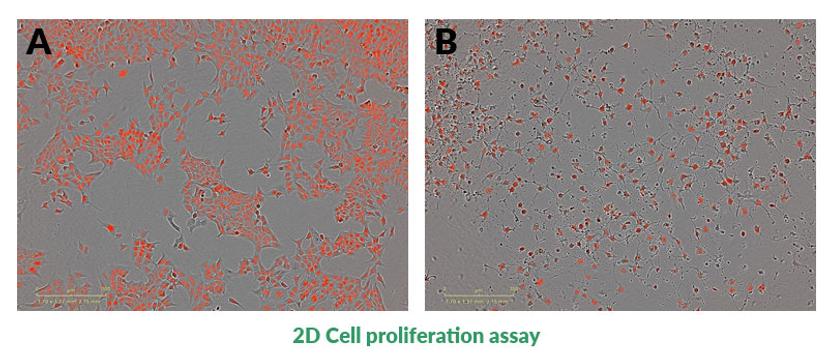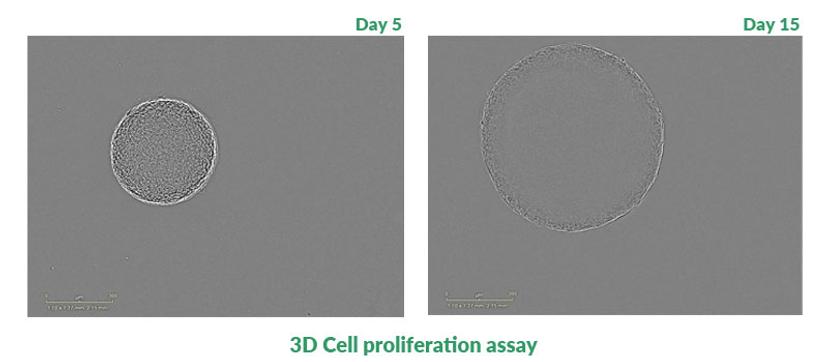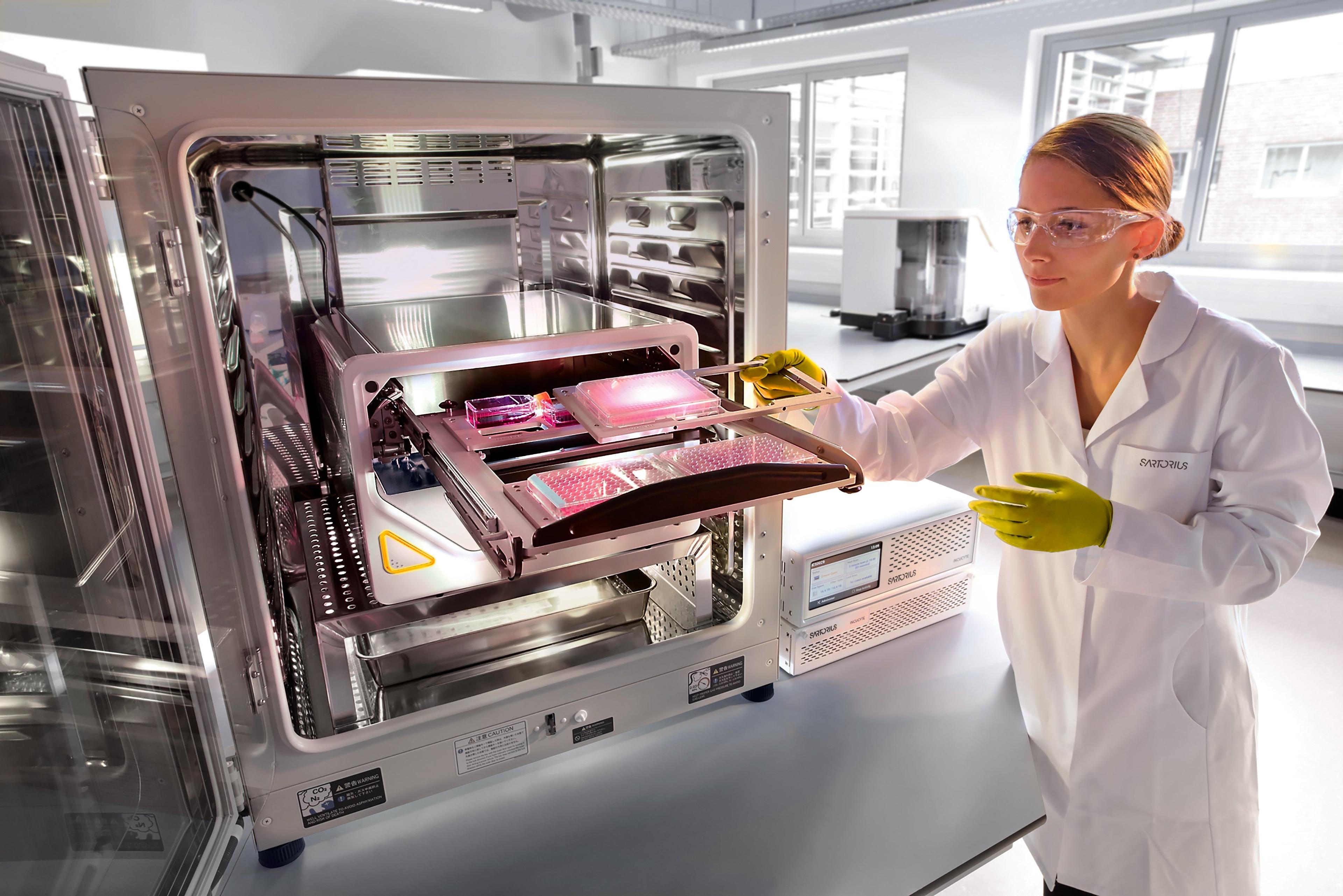Cancer Biologists Investigate Epigenetic Regulation of Pancreatic Cancer Cells using Live Cell Imaging
Cancer epigeneticist, Dr. Sammy Ferri-Borgogno, of the MD Anderson Cancer Center, Texas, tells SelectScience® how live cell imaging reveals more information about pancreatic cancer cells while saving time and money
16 Jul 2017
A few decades ago, an important finding caused a paradigm shift in cancer genetics. Studies reported that key events in cancer initiation and progression can occur regardless of the underlying DNA. A field then emerged to curb cancer via epigenetics, the study of heritable changes in gene expression that occur independently of changes in the primary DNA sequence.
Although epigenetic modifications of the genome – for example, methylation of DNA, modifications of histone proteins – do not directly alter the DNA sequence, they can regulate gene expression and affect cell signaling that causes cancer. In this interview, SelectScience speaks with cancer researchers, Dr. Sonal Gupta and Dr. Sammy Ferri-Borgogno, who study epigenetic regulation in pancreatic cancer at the MD Anderson Cancer Center at the University of Texas, USA.


“The main focus of my research lab is to study the role of key epigenetic regulators in development and progression of pancreato-biliary cancers like pancreatic cancer and cholangiocarcinoma,” says Gupta, Assistant Professor, at the division of pathology/lab medicine at the university. “Genes coding for these epigenetic regulators are frequently found to be mutated in tumors cells isolated from patients. But their role in cancer biology is not well known. We are functionally annotating these genes using novel genetically engineered mouse models and cells lines where the tumors are driven by altering these genes,” he adds.
“We have developed mouse models with specific mutations in epigenetic regulators,” says Ferri-Borgogno, a postdoctoral researcher in the lab. “Last year, we studied the mouse models to examine whether they can recapitulate the tumor progression that we see in the humans. We characterized these mouse models in order to identify an epigenetic mechanism to target.”
Ferri-Borgogno extracts cancerous cells from the developed mouse models and studies them in vitro. “In the beginning, we have a mixed population of cells. We then select for tumor cells and characterize them with sequencing like RNAseq or mass spectrometry to confirm the mutation,” explains Ferri-Borgogno. “We are doing a combination of shRNA and drug therapy to find mechanisms of lethality for these cancer cells.”
To closely examine the 2D and 3D behavior of the mouse-derived pancreatic cancer cells, Gupta’s lab members use continuous live cell imaging. “It is a well-accepted notion now that cultured cancer cells change their physical characteristics based on the stage of cell cycle, and environmental factors like availability of growth nutrients, oxygen and pH of culture media. Such changes, in turn, are dictated by presence of relative number of neighboring cells. For people studying epigenetic regulation of cancer cells, it's very useful to be able to track changes in cellular behavior with cell culture environment changes,” notes Gupta.

You can have a lot of information — you can potentially take images every hour for the whole day.
Dr. Sammy Ferri-Borgogno MD Anderson Cancer Center, University of Texas
Upon adding apoptotic cell death markers, the scientists track the behavior of the cancer cells live using the IncuCyte Live-Cell Analysis system. Without the need to monitor cells all day and night, and without having to seed dozens of cell culture dishes for different conditions and different time points, Ferri-Borgogno utilizes the ‘walkaway’ nature of this live cell imager to monitor the cancer cells over time. “It’s cool because you can save time. You can have a lot of information — you can potentially take images every hour for the whole day. It helps you observe if the drug is killing cancer cells, or if there is a change in morphology or inflammation… Basically it tracks critical properties of the cell that contribute to your experiment,” says Ferri-Borgogno.
“Live cell imaging platforms like Incucyte from Essen Bioscience enable us to track cellular behavior and morphology in a real time, allowing us to decide when to add experimental drugs to cells or when to harvest cells for gene expression study,” notes Gupta.
The lab also extends the live cell imaging to 3D cell culture when studying pancreatic tumor spheroids. “We can track the spheroids over a period of time, to see how they grow, to check if they are shrinking,” says Ferri-Borgogno. “This live imaging is good because it helps us understand our cells three-dimensionally, and to confirm if the model we use is reliable.”

For people studying epigenetic regulation of cancer cells, it's very useful to be able to track changes in cellular behavior with cell culture environment changes.
Dr. Sonal Gupta MD Anderson Cancer Center, University of Texas
When working with mouse-derived cancer cells, every researcher is aware of a big constraint: limited availability of cells. Ferri-Borgogno notes how her choice to perform live cell imaging helps make the most of these limited, expensive cells. “Previously, if I had to do a cell proliferation assay or even a cell count, I would to have make replicates and stain the cells with the dye at every required time point. But with the IncuCyte, I can have only one plate of cancer cells and take pictures every day. This saves money, reagents and cells, especially if you have tumor cells extracted from a mouse which are very limited in the number of cells,” says Sammy. “You still have the chance to do your experiments even though you didn’t have to set up replicates.”
Unlike cancer genetics, epigenetic changes can be triggered by lifestyle, environment, diet and other external factors. The quest for investigating cancer epigenetics lies in the promise of epigenetics therapy, a school of thought that these factors are potentially reversible and can be restored to their normal state. “With the growing discovery of genetic mutations in epigenetic regulators found in cancer cells, more labs are studying the biology of these chromatin regulators than ever before. In addition, most pharmaceutical companies are investing in development and testing of epigenetic inhibitors to tap this growing and exciting area of cancer research,” says Gupta.
To move the field forward, we will need as much information on the chemistry, morphology and behavior of cancer cells as possible. Ferri-Borgogno concludes: “Live cell imaging provides so much information about the cells that it helps your research leap ahead.”

